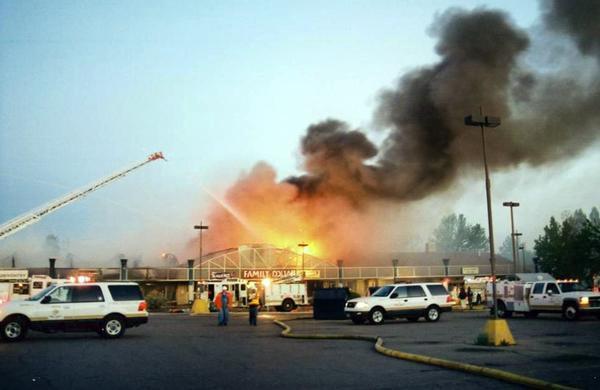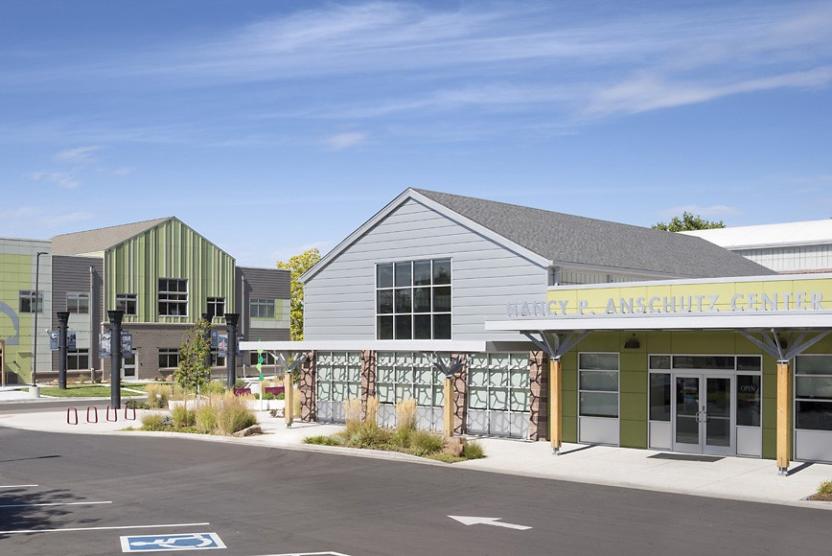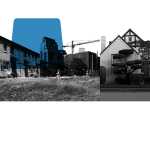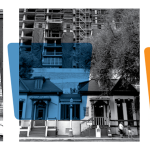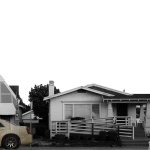isinvestment is considered a critical issue in communities of color, affecting all major cities to some degree. In West Baltimore, Bon Secours’ efforts necessarily emphasize community engagement in the planning and implementation of place-based initiatives to counteract disinvestment.
Across the country, we need more resident-driven interventions intentionally designed to reverse the effects of disinvestment in communities of color.
In Denver, the Urban Land Conservancy (ULC) has focused on similar community development efforts, working to ensure the region’s underserved populations are able to live and thrive in vibrant diverse neighborhoods. ULC’s vision is that all neighborhoods will have the physical assets and resources necessary for individuals to enjoy a high quality of life, including affordable housing, transportation, and health care.
ULC’s community development experiences reaffirm Bon Secours’ statement about the inherent challenges of community engagement. We, too, have found that the principles of community engagement, while easy to express, are difficult to carry out. A particularly relevant example is our community-led transformation of the Holly Square Shopping Center (the Holly), a neighborhood commercial strip that was destroyed by gang-related arson in 2008.
The Holly was developed using the Community Land Trust (CLT) model. CLTs are a direct result of the grassroots community activism that started during the 1960s Civil Rights Movement, and they have successfully stabilized, improved, and built wealth in underserved and blighted neighborhoods across the nation. CLTs prevent the loss of local assets by giving the community ownership of land, homes, and commercial buildings, which can be vulnerable to private real estate speculation.
ULC used a CLT 99-year ground lease to protect a variety of community benefits and to preserve the resident-guided investments made at the Holly. In 2009, ULC worked with the predominately African American neighborhood of Northeast Park Hill to purchase the 2.6-acre Holly site, with the support of Denver’s Office of Economic Development and The Denver Foundation’s Strengthening Neighborhoods Program.
We have found that the principles of community engagement, while easy to express, are difficult to carry out.
For ULC, learning what community members envisioned for their neighborhood — rather than allowing a traditional real estate developer to tell residents what they needed — was essential. We decided to rethink our process to ensure community members could successfully co-create the vision for the Holly. Through our process, we identified 3 essential pillars of strong community engagement.
1 ) Create a structure for residents to co-create the vision for a redevelopment project.
From the beginning, it was ULC’s aim to revitalize the Holly with direct participation in the form of sustained, consistent, and respectful input from both nonprofit stakeholders and residents of the Northeast Park Hill community. ULC’s collaboration with residents involved 3 main components.
First, just as Bon Secours helped to develop Operation ReachOut Southwest, ULC worked in partnership with local groups to create the Holly Area Redevelopment Project (HARP), which conducted a 2-year community visioning process.
Learning what community members envisioned for their neighborhood — rather than allowing a traditional real estate developer to tell residents what they needed — was essential.
HARP’s first neighborhood meetings allowed people to work through their collective grief over the burning of the shopping center. It also provided a space for residents to share the history of the Holly, which was originally a hub of successful small businesses and a source of African American pride. Over the years, it had become a home to gang and drug activity.
Second, neighborhood leaders and representatives of community-based programs came together and hired professional planning consultants, Community by Design, to help with the visioning process.
Third, HARP surveyed community members about redevelopment. The survey was used to identify the primary values of the Northeast Park Hill neighborhood. The values, which would be incorporated into the reinvestment and redevelopment processes, were formally adopted as the 5 “Good Neighbor Principles”:
- Partnership and Cooperation
- Quality of Life
- Public Realm
- Compatibility
- Sustainable Design
The 3-part community collaboration provided 2 key lessons:
- Establish a common definition of “community” and a clear decisionmaking process at the outset. Balancing the voices of adult and youth resident beneficiaries, for-profit business stakeholders, and neighborhood-based nonprofit leadership and staff should be a primary goal. It’s important to help different groups reach compromises and ensure residents are directly involved in planning and implementation.
- Identify and secure specific resources for resident leadership training. Providing residents with leadership development and community-organizing training can help them identify and work on local issues. This should build the capacity of community members to confront emerging problems and take collective action.
2 ) Identify both specific and general community needs.
To better understand the community’s desire and support for future redevelopment, ULC and HARP asked residents to provide input on the characteristics and services they would like to see included in any project.
HARP’s first neighborhood meetings provided a space for residents to share the history of the Holly, which was originally a hub of successful small businesses and a source of African American pride.
The characteristics included events and festivals, teaching and learning, educational and entrepreneurial training, public spaces, public art, culture, and heritage. Stakeholders also identified services and uses they’d like to see at the Holly in the future, such as an educational facility, a wellness center, a heritage center, and an entrepreneurial center.
With those ideas in mind, HARP and ULC initiated a competitive proposal process in 2012 to determine what the first wave of redevelopment would look like. The community settled on creating the Boys and Girls Club of Metro Denver as an after-school youth recreation facility. The Vickers Boys and Girls Club opened in the summer of 2013, and now serves approximately 250 youth each day. The annual membership fee is only $2.
In May 2015, the HARP Board recommended that the Roots Elementary School build a new school on the remaining land dedicated to serving local children. Construction was completed in July 2016, and in August 2016 Roots opened the new facility to 150 kindergarteners, first graders, and second graders.
3 ) Ensure residents can move their goals forward in the face of challenges.
In 2014, a spike in gang shootings and related public safety concerns prompted the Denver Department of Public Works to install a concrete barricade, without warning, to block car access to an adjacent residential street. The barricade appeared literally overnight, with no advance community notification, discussion, or public outreach.
While everyone agreed that the neighborhood needed a solution to the escalation in violence, HARP, as the organized voice of the community, viewed the sudden installation of the barricade as a disrespectful violation of resident trust. HARP called for the removal of the barricade, and the city agreed to make it a temporary measure. After 3 months, the barricade was removed, redevelopment of the Holly resumed, and gang issues subsided.
Today, the Holly is a vibrant, child-centered place. It’s a place of positive active recreation that offers health and educational opportunities for the Northeast Park Hill neighborhood.
With support from local sponsors, including the Stapleton Foundation and Denver Health, ULC and community stakeholders have embraced residents’ desire to incorporate the arts, health, and heritage into the neighborhood landscape. In 2015, ULC launched a plan for an urban bike and pedestrian trail that features local art. It would be a 9-mile loop, connecting the Holly to surrounding neighborhoods and a new commuter rail station, the 303 ArtWay.
Across the country, we need more resident-driven interventions intentionally designed to reverse the effects of disinvestment in communities of color.
The total investment at the Holly has resulted in a cluster of highly desirable services, which are driving up home prices in the area. Due to concerns about displacement of low- and moderate-income residents, ULC is once again responding to the community by planning and launching new CLT efforts. This work will focus on the acquisition and preservation of existing affordable single-family homes in Northeast Park Hill to protect the residents intended to benefit from the Holly’s new services and uses.
ULC believes the CLT model, combined with strong community engagement practices, should become the rule, rather than the exception, in local efforts to counter disinvestment. This approach can engage and empower vulnerable neighborhoods and populations, who are too often left out of the conversation.
Tony Pickett is a member of the BLOCK Project’s Community of Practice and Vice President of Master Site Development at the Urban Land Conservancy (ULC). Photos of the Holly courtesy of Tony Pickett and HARP.
